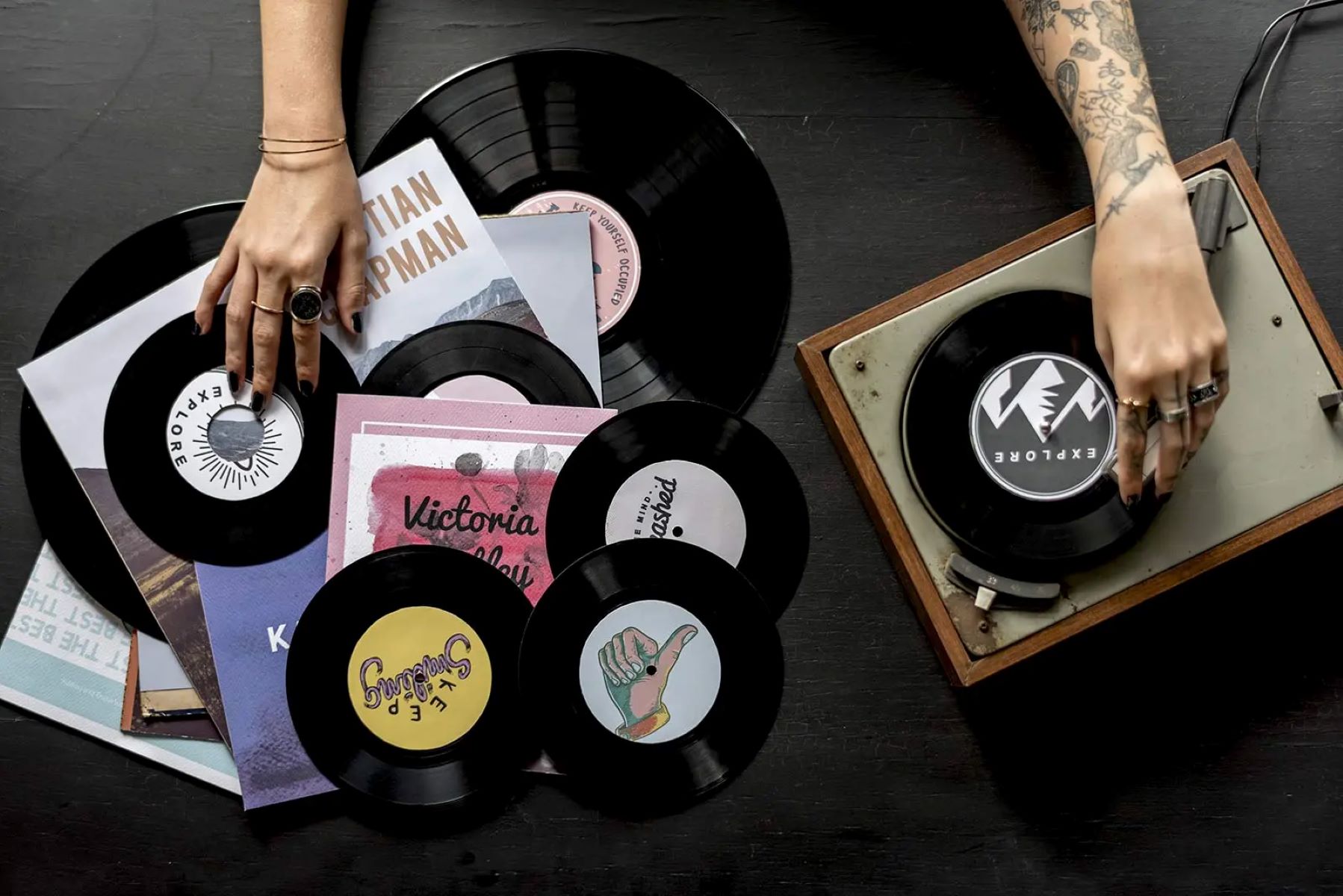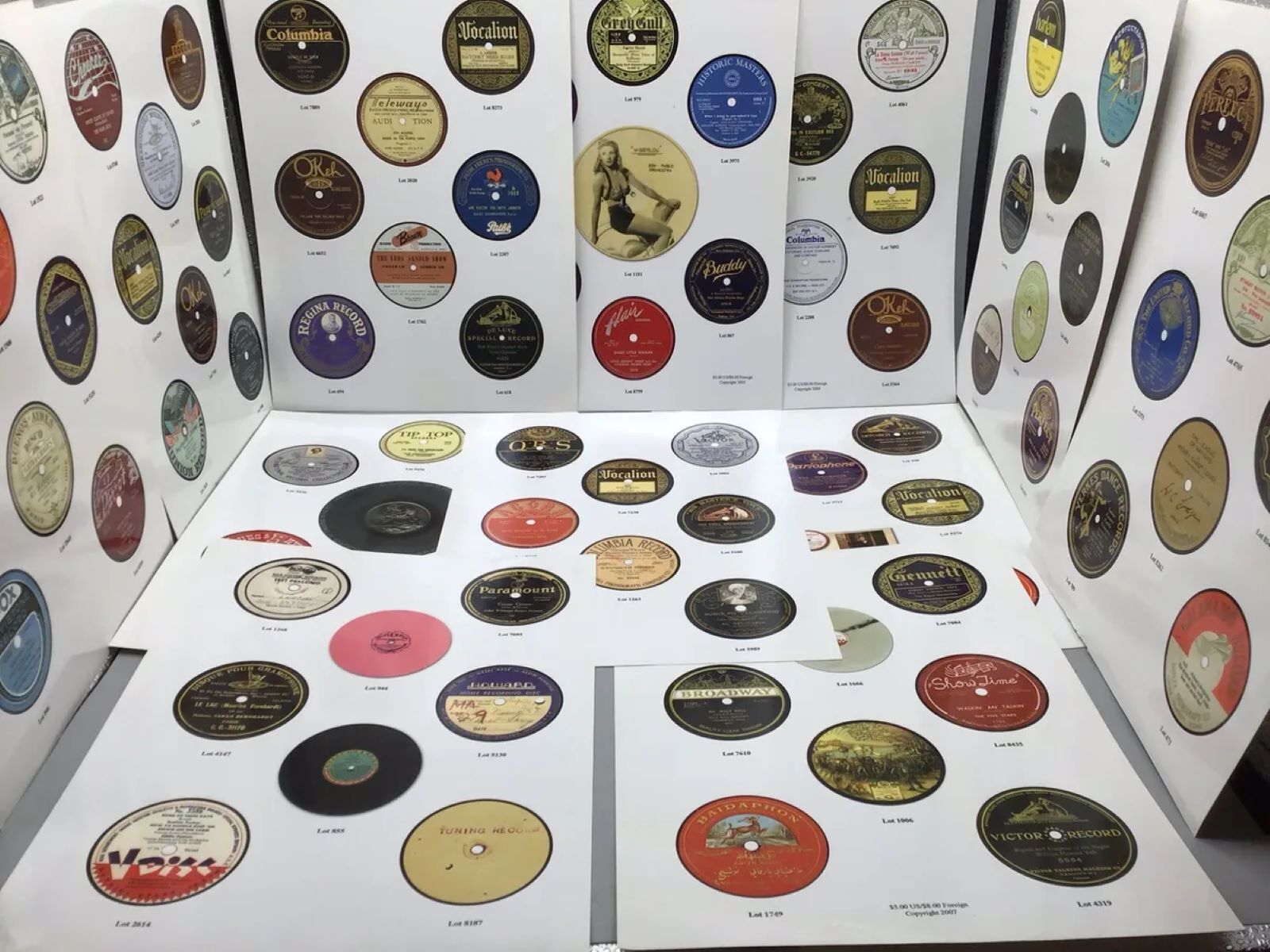Home>Production & Technology>Record Label>How To Start A Record Label With No Money


Record Label
How To Start A Record Label With No Money
Published: January 24, 2024
Learn how to start a record label with no money and turn your passion for music into a successful business venture. Discover essential tips and strategies to launch your own record label in this comprehensive guide.
(Many of the links in this article redirect to a specific reviewed product. Your purchase of these products through affiliate links helps to generate commission for AudioLover.com, at no extra cost. Learn more)
Table of Contents
- Introduction
- Step 1: Define Your Vision and Goals
- Step 2: Research the Music Industry
- Step 3: Build a Solid Business Plan
- Step 4: Collaborate with Artists
- Step 5: Create a Brand and Identity
- Step 6: Promote Your Record Label
- Step 7: Use Social Media and Online Platforms
- Step 8: Network and Build Connections
- Step 9: Seek Sponsorship and Partnerships
- Step 10: Generate Revenue Streams
- Conclusion
Introduction
Starting a record label is a dream for many music enthusiasts. It’s an opportunity to support and promote talented artists, cultivate a thriving music community, and potentially make a profit. However, one common misconception is that starting a record label requires a substantial amount of money. In reality, with the right strategy and dedication, it is possible to launch a successful record label with little to no money.
In this article, we will explore the steps to start a record label with limited financial resources. We will delve into the key aspects of building a record label, from defining your vision and goals to promoting your artists and generating revenue. So, if you’re passionate about music and entrepreneurship, let’s dive in and learn how to turn your dream of starting a record label into a reality.
It’s important to note that while starting a record label doesn’t necessarily require a large financial investment, it does require a significant investment of time, effort, and dedication. Building a record label from scratch is a challenging endeavor, but with the right mindset and strategies, it can be a rewarding and fulfilling journey.
Now, let’s explore the step-by-step process of starting a record label with no money or limited resources. By following these steps, you’ll be well-equipped to establish a successful record label that supports and promotes promising artists.
Step 1: Define Your Vision and Goals
Before diving into the practicalities of starting a record label, it’s crucial to define your vision and goals. What do you want your record label to represent? What kind of music do you want to promote? What is your long-term vision for the label?
Take some time to reflect on your musical tastes, interests, and the type of artists you want to work with. Consider the genre or genres you’re passionate about and the niche you’d like to carve out in the music industry. Having a clear vision and goals in mind will help you shape your record label’s identity and guide your decision-making process.
When defining your vision and goals, also consider the values and mission you want your record label to embody. Are you focused on supporting emerging artists and providing them with a platform to grow? Are you dedicated to promoting diversity and inclusivity in the music industry? Having a strong sense of purpose will not only attract like-minded artists but also resonate with audiences.
It’s essential to set both short-term and long-term goals for your record label. Short-term goals could include signing a certain number of artists, releasing a specific number of albums or singles, or gaining a certain number of followers on social media. Long-term goals could involve achieving recognition in the industry, securing distribution deals, or establishing a reputation for discovering and nurturing exceptional talent.
Remember, your vision and goals will act as a guiding force throughout your journey as a record label founder. They will shape your decision-making processes and provide a clear direction for your actions. Take the time to write down your vision and goals, and refer back to them regularly to stay focused and motivated.
Once you have defined your vision and goals, you can move on to the next step: researching the music industry. Understanding the landscape in which your record label will operate is essential for making informed decisions and staying ahead of the curve.
Step 2: Research the Music Industry
Researching the music industry is a crucial step in starting a record label. It allows you to gain valuable insights into the current trends, competition, and opportunities in the market. By understanding the landscape, you can make informed decisions and develop effective strategies to navigate the industry successfully.
Start by researching the different genres and sub-genres of music that are popular and in demand. Identify the emerging trends and artists that are gaining traction. This will help you shape your record label’s focus and determine the kind of artists you want to work with.
Next, study established record labels in the industry. Analyze their business models, marketing strategies, and artist roster. What sets them apart? What can you learn from their success? Take note of their promotional tactics, distribution channels, and the platforms they utilize to reach their target audience.
Pay attention to the challenges and trends in the music industry. Understand the impact of streaming services, digital downloads, and physical sales on the revenue streams of record labels. This knowledge will empower you to adapt and evolve your business strategies accordingly.
Additionally, research the legal and financial aspects of running a record label. Familiarize yourself with copyright laws, licensing agreements, and royalty structures. Understand the financial responsibilities you will have as a record label owner, such as budgeting for production, marketing, and artist development.
While conducting your research, make an effort to network with industry professionals, attend music industry conferences, and join online communities. Building relationships in the industry can open doors to collaboration opportunities, partnerships, and valuable insights.
By fully immersing yourself in the music industry and staying updated on the latest developments, you will be better equipped to make strategic decisions and position your record label for success.
Once you have thoroughly researched the music industry, you can move on to the next step: building a solid business plan for your record label. This plan will serve as a roadmap to guide your operations and help you secure support from investors or sponsors.
Step 3: Build a Solid Business Plan
A well-crafted business plan is essential for any successful record label. It serves as a roadmap, outlining your strategies, goals, and financial projections. A solid business plan will not only help you clarify your vision but also attract potential investors or sponsors.
Start by outlining the executive summary of your plan. This section should provide an overview of your record label, including its mission, vision, and unique selling points. Keep it concise but compelling, highlighting the key aspects that make your label stand out.
Next, conduct in-depth market research and analysis. Define your target audience and evaluate their music consumption habits. Identify the competition in the market and analyze their strengths and weaknesses. This information will help you carve out a distinctive space for your record label.
Outline your marketing and promotion strategies in detail. Describe how you plan to reach your target audience and establish a strong brand presence. Include your plans for social media marketing, content creation, live performances, and collaborations with other industry professionals.
Financial projections are crucial in your business plan. Estimate your startup costs, including equipment, legal fees, marketing expenses, and artist development. Detail your revenue streams, such as album sales, streaming royalties, merchandise sales, and potential sponsorships or partnerships. Present a realistic financial forecast for the next three to five years, showcasing your growth potential.
Additionally, outline your artist development program and plans for talent acquisition. Explain how you will support and nurture your artists, including funding for studio time, music production, and marketing campaigns. Demonstrating your commitment to artist success will attract talented musicians to your label.
Include an organizational structure in your business plan, detailing key roles and responsibilities. Consider whether you will need to hire additional staff or work with freelancers or industry partners. Showcasing a professional and well-structured team will instill confidence in potential investors or sponsors.
Finally, conclude your business plan with an implementation timeline. Outline the key milestones and goals you aim to achieve in the first year of your record label’s operation. This will demonstrate your focus and commitment to making your vision a reality.
A solid business plan is a crucial tool for guiding your record label’s growth and attracting support. Regularly revisit and update your plan as your label evolves, allowing for adjustments and improvements along the way.
Now that you have a solid business plan in place, you can move on to the next step: collaborating with artists to build your roster.
Step 4: Collaborate with Artists
Collaborating with talented artists is at the heart of any successful record label. Building a strong roster of artists will define your label’s identity and contribute to its overall success. When selecting artists to collaborate with, consider their musical style, dedication to their craft, and compatibility with your label’s vision.
Start by actively scouting for artists through various platforms such as music streaming sites, social media, live performances, and local music scenes. Attend concerts, open mic nights, and music festivals to discover emerging talent and connect with artists directly.
Develop a system for evaluating artists that align with your label’s genre and vision. Consider factors such as their songwriting skills, vocal abilities, stage presence, and potential for growth in the music industry. Building strong relationships with artists based on trust and respect is crucial for a successful collaboration.
When considering artists for collaboration, assess their existing fan base, social media following, and engagement with their audience. Look for artists who have a dedicated and engaged fan base, as they can help amplify your label’s reach and generate buzz.
Once you have identified potential artists, reach out to them and express your interest in working together. Attend their performances, offer feedback on their music, and showcase your label’s value proposition. Emphasize how your record label can support their career growth, whether it’s through financial backing, promotional efforts, or access to industry connections.
Collaborating with artists goes beyond simply signing them to your label. It involves developing a mutually beneficial relationship built on trust and open communication. Be transparent about your expectations, contract terms, and the opportunities your record label can provide. Create an environment where artists feel supported and valued, and foster an atmosphere of collaboration and creativity.
Invest in artist development by providing resources for music production, studio time, and marketing campaigns. Help artists refine their craft by connecting them with industry professionals, such as producers, songwriters, and vocal coaches. Offer guidance on branding, album artwork, and music video production to help artists create a strong and cohesive image.
By collaborating with talented artists, you not only support their careers but also enhance your record label’s reputation and reach. A strong roster of artists will attract industry attention, garner media coverage, and increase the likelihood of success in the competitive music landscape.
Now that you have established collaborations with artists, it’s essential to create a compelling brand and identity for your record label, which we will explore in the next step.
Step 5: Create a Brand and Identity
A strong brand and identity are essential for any record label. It’s what sets you apart from the competition and helps you establish a cohesive image that resonates with your target audience. Creating a compelling brand and identity will help attract both artists and fans to your label.
Start by defining the core values and unique selling points of your record label. What makes your label different? What is the overall vibe and aesthetic you want to portray? Consider the genre and style of music you specialize in and how you want to be perceived by your audience.
Develop a visually appealing logo and color palette that represents your label’s personality. Your logo should be memorable and easily recognizable. The colors you choose should evoke the emotions and feelings associated with your music. Consistency in visual branding across your website, social media platforms, and promotional materials will help reinforce your identity.
Craft a compelling story or narrative that accompanies your label. Share the mission behind the label, your passion for music, and the goals you aim to achieve. Connect with your audience on a deeper level by sharing the values and beliefs that drive your label’s operations.
Your online presence plays a crucial role in establishing your brand. Create a professional and user-friendly website that showcases your roster of artists, releases, and upcoming events. Utilize social media platforms to engage with your audience, share behind-the-scenes content, and promote your artists’ work.
Another important aspect of building your brand is curating a distinct sound. Aim for consistency in the musical style and quality across your releases. This will help cultivate a loyal fan base and build anticipation for future releases.
Collaborate with designers, photographers, and videographers to create visually stunning album artwork, promotional photos, and music videos. These visual elements should be closely aligned with your brand’s aesthetic and convey the essence of your label and its artists.
Building a brand and identity is an ongoing process. Regularly evaluate and refine your brand to ensure it remains relevant and resonates with your audience. Stay true to your core values but also be adaptable to changes in the music industry and evolving trends.
By creating a compelling brand and identity, you carve out a distinct space for your record label in the music industry. This not only attracts artists but also helps you connect with fans who are aligned with your musical vision. In the next step, we’ll explore effective strategies for promoting your record label and its artists.
Step 6: Promote Your Record Label
Promoting your record label is crucial for gaining visibility and attracting attention to your artists. Effective promotion strategies will help you reach a wider audience, build a loyal fan base, and create buzz around your label. Here are some key strategies to consider:
1. Develop a strong online presence: Create a professional website and optimize it for search engines. Utilize social media platforms to engage with fans, share updates, and showcase your artists’ music and performances. Regularly update your online platforms with compelling content to keep your audience engaged and interested.
2. Leverage influencer marketing: Collaborate with influential bloggers, vloggers, and social media personalities who have a significant following in your genre. Working with these influencers can help expose your label and its artists to a wider audience and generate buzz around your releases.
3. Engage with the music community: Attend industry events, music festivals, and networking events to connect with industry professionals, artists, and music enthusiasts. Build relationships with DJs, music journalists, and other tastemakers in your genre who can help promote your label and artists.
4. Create a press kit: Develop a comprehensive press kit that includes information about your label, your artists, and their music. Include high-quality press photos, artist biographies, and notable achievements. Distribute your press kit to relevant music publications, radio stations, and online platforms to garner media coverage.
5. Create captivating content: Develop engaging content that showcases your label’s personality and values. This could include behind-the-scenes videos, artist interviews, live performances, and music documentaries. Well-produced and visually appealing content can help build excitement around your label and its artists.
6. Collaborate with other industry professionals: Seek out opportunities to collaborate with other labels, producers, and artists. Cross-promotion can help expand your reach and expose your artists to new audiences. Consider releasing split singles or collaborative albums to tap into different fan bases.
7. Utilize email marketing: Build an email list of fans, industry professionals, and influencers who are interested in your label and its artists. Send regular newsletters with updates, exclusive content, and upcoming events. Personalize your emails and make them engaging to encourage interaction and build a strong connection with your audience.
Remember, consistency is key in promoting your record label. Regularly assess the effectiveness of your strategies and adjust as needed. Be proactive in seeking out new opportunities and staying updated on the latest marketing trends in the music industry.
By implementing these promotional strategies, you’ll increase the visibility of your record label and build a dedicated fan base for your artists. The next step in starting your record label is to utilize social media and online platforms effectively to reach your target audience.
Step 7: Use Social Media and Online Platforms
In today’s digital age, social media and online platforms play a vital role in promoting your record label and connecting with your target audience. It’s essential to leverage these platforms effectively to maximize your online presence and reach. Here are some key strategies to consider:
1. Choose the right platforms: Identify the social media platforms that align with your label’s target audience and genre. Popular platforms for music promotion include Instagram, Twitter, Facebook, and YouTube. Tailor your content and approach to each platform’s characteristics and user demographics.
2. Share engaging content: Regularly post compelling content that showcases your artists, their music, and behind-the-scenes moments. This could include music snippets, live performances, studio sessions, interviews, and artist spotlights. Encourage audience engagement by asking questions, running contests, and responding to comments.
3. Utilize hashtags: Make use of relevant hashtags to increase the discoverability of your content. Research popular and trending hashtags in your genre and incorporate them into your posts. This can help expand your reach and attract new followers who are interested in your label’s music.
4. Collaborate with influencers: Reach out to influencers or popular accounts in your genre and collaborate on promotional initiatives. This could involve shoutouts, featuring your artists’ music in their content, or hosting live-stream sessions together. Leveraging influencer partnerships can help you tap into new audiences and gain credibility.
5. Engage with your audience: Respond to comments, direct messages, and mentions on social media. Show genuine interest in your followers’ thoughts and feedback. Engaging with your audience fosters a sense of community and builds loyalty. Consider organizing Q&A sessions, live streams, and fan contests to further connect with your audience.
6. Utilize online music platforms: Take advantage of music streaming platforms, such as Spotify, Apple Music, and SoundCloud, to distribute and promote your artists’ music. Create artist profiles, curate playlists featuring your label’s music, and engage with listeners. Encourage your artists’ fans to follow their profiles and share their music.
7. Collaborate with video platforms: YouTube and other video platforms provide a powerful medium for promoting your record label. Create visually appealing music videos, lyric videos, and behind-the-scenes footage. Collaborate with popular YouTubers or create your own channel to share your label’s content and expand your reach.
Remember, consistency is key when utilizing social media and online platforms. Develop a content calendar and establish a regular posting schedule. Analyze your metrics and adjust your strategies based on audience response and engagement. Stay adaptable to new platforms and trends as they emerge in the ever-evolving digital landscape.
By effectively utilizing social media and online platforms, you can increase your label’s visibility, connect with your target audience, and create a vibrant online community around your music. In the next step, we will explore the importance of networking and building connections within the music industry.
Step 8: Network and Build Connections
Networking and building connections within the music industry are essential steps to grow your record label. It allows you to establish valuable relationships with industry professionals, artists, and other key players. Here are some strategies to effectively network and build connections:
1. Attend industry events: Make it a priority to attend music conferences, festivals, and industry showcases. These events provide opportunities to meet industry professionals, artists, and potential collaborators. Network with attendees, exchange contact information, and follow up with those you connected with.
2. Join music organizations and associations: Become a member of local or national music organizations and associations. These communities often host networking events, workshops, and seminars that offer valuable insights and opportunities to connect with industry professionals.
3. Collaborate with other labels and artists: Collaborations with other labels or artists can expand your network and bring exposure to your artists. Seek out opportunities to collaborate on projects, releases, or events. By working together, you can tap into each other’s fan base and gain access to new audiences.
4. Connect with industry professionals: Engage with professionals such as A&R representatives, producers, managers, and booking agents. Attend industry-specific workshops or panels where you can learn from their expertise and establish relationships. Remember, these connections can be instrumental in finding new talent and securing valuable partnerships.
5. Utilize online platforms: Take advantage of online platforms dedicated to music networking, such as LinkedIn, Soundcloud, and Bandcamp. Join industry groups, connect with professionals, and participate in online discussions. Engage with fellow musicians, producers, and labels to broaden your network.
6. Support local music scenes: Engage with your local music community by attending shows, open mic nights, and artist showcases. Connect with local artists, promoters, and venue owners. Building a strong presence and reputation within your own community can lead to valuable networking opportunities and word-of-mouth promotion.
7. Seek mentorship: Look for experienced professionals in the industry who can offer guidance and mentorship. A mentor can provide valuable insights, industry knowledge, and connections that could greatly benefit your record label’s growth.
8. Follow up and maintain relationships: After making connections, remember to follow up with a personalized message or email. Stay in touch with industry professionals, artists, and collaborators. Share updates on your label’s progress, and offer support or assistance when possible. Building long-lasting relationships is crucial for continued success in the music industry.
Building a strong network and establishing meaningful connections will open doors for collaboration opportunities, industry insight, and support. Be proactive, genuine, and enthusiastic when networking to make a lasting impression. In the next step, we will explore how to seek sponsorship and partnerships to further support your record label’s growth.
Step 9: Seek Sponsorship and Partnerships
Seeking sponsorship and partnerships is an important step in growing your record label. It can provide additional resources, financial support, and opportunities for exposure. Here are some strategies to consider when seeking sponsorship and partnerships:
1. Identify potential sponsors: Research companies or brands that align with your record label’s values, genre, or target audience. Look for businesses that have a history of supporting the arts or music-related initiatives. These could include local businesses, music equipment manufacturers, music streaming platforms, or lifestyle brands.
2. Create a sponsorship proposal: Develop a comprehensive sponsorship proposal that outlines the benefits of partnering with your record label. Include information about your label’s mission, artist roster, promotional plans, and the value you can offer to potential sponsors. Clearly articulate the advantages of aligning their brand with your label and the exposure they can expect.
3. Highlight the benefits: Emphasize the unique opportunities for brand exposure that your record label can provide. This could include featuring sponsor logos on album covers, merchandise, and promotional materials. Offer promotional opportunities at live shows, events, and social media platforms. Highlight the potential for online engagement with your audience.
4. Leverage your network: Utilize your network and industry connections to explore potential sponsorship opportunities. Connect with individuals who may have existing relationships with sponsors or who can introduce you to relevant contacts. Attend industry events and conferences where you can meet potential sponsors face-to-face.
5. Pitch partnerships with other music industry professionals: Identify other music industry professionals, such as recording studios, music producers, or music publishers, who may be interested in partnering with your label. Propose mutually beneficial collaborations or joint ventures that can expand your reach and offer additional value to both parties.
6. Customize sponsorship packages: Tailor sponsorship packages to fit the specific needs and budget of each potential sponsor. Consider offering tiered sponsorship levels with varying benefits to accommodate different budgetary constraints. Be open to negotiations and flexible in finding common ground that benefits both your label and the sponsor.
7. Build long-term relationships: Once you secure a sponsorship or partnership, nurture the relationship and deliver on your promises. Provide regular updates on the impact of their support and involve sponsors in the success of your label and artists. Look for opportunities to cross-promote and continue to find ways to offer value to the sponsor beyond the initial agreement.
Remember, seeking sponsorship and partnerships requires persistence and creativity. Be prepared for rejections but remain focused on finding the right fit for your label. Keep refining your sponsorship pitch and proposal based on feedback and adapt to the evolving needs and interests of potential sponsors.
By securing sponsorships and partnerships, you can access additional resources, build credibility, and expand your label’s reach. In the next step, we will explore different revenue streams that can help sustain your record label’s operations.
Step 10: Generate Revenue Streams
Generating revenue is a vital aspect of running a successful record label. While the music industry has undergone significant changes in recent years, there are still multiple revenue streams that you can explore to sustain your label’s operations. Here are some key revenue streams to consider:
1. Music Sales: Traditional music sales, such as physical albums and digital downloads, can still generate revenue. Make your artists’ music available on popular digital platforms like iTunes, Bandcamp, and Amazon Music. Additionally, consider offering limited edition physical releases or merchandise bundles to appeal to fans who value tangible music products.
2. Streaming Royalties: Streaming platforms like Spotify, Apple Music, and Tidal offer opportunities for artists to earn royalties based on the number of streams their music receives. Ensure your label’s artists are properly registered with performance rights organizations to collect these royalties effectively.
3. Publishing and Synchronization: Publishing deals can generate revenue through licensing songs for use in advertisements, films, TV shows, or video games. Seek partnerships with music supervisors, sync agencies, and advertising companies to maximize opportunities for synchronization placements.
4. Live Performances: Organize live shows, tours, and events featuring your artists. Revenue can be generated through ticket sales, merchandise sales at shows, and artist performance fees. Collaborate with local venues, promoters, and booking agents to book and promote these performances effectively.
5. Merchandise Sales: Create branded merchandise, including t-shirts, hoodies, posters, and accessories, featuring your label’s logo and artists’ designs. Sell these items through your website, at live shows, and through online merchandise platforms. Merchandise sales can be a significant source of revenue and also help promote your label’s branding.
6. Licensing and Sync Placements: Explore opportunities for licensing your artists’ music to be used in commercials, films, TV shows, and video games. Monitor sync licensing opportunities and actively pitch your artists’ music to music supervisors and production companies.
7. Sponsorships and Endorsements: Seek partnerships with brands and companies who are interested in collaborating with your label’s artists. These partnerships can provide financial support through sponsorships, endorsements, and branded content collaborations. Ensure any partnerships align with your label’s values and artistic integrity.
8. Digital Content Creation: Take advantage of the digital age by creating diverse content, such as exclusive behind-the-scenes videos, artist interviews, live performances, and documentaries. Monetize this content through platforms like YouTube, Patreon, and exclusive fan subscriptions.
9. Funding and Grants: Research funding opportunities and grants available for music-related projects. These could be from governmental organizations, arts foundations, or private entities. Apply for grants to support specific initiatives, such as artist development programs or community outreach projects.
10. Licensing and Sub-publishing: Explore opportunities to license your artists’ music for release in foreign markets. Partner with sub-publishers or international labels to ensure your artists’ music reaches new audiences globally and generates additional revenue.
Remember, building and diversifying revenue streams takes time and effort. Keep exploring new opportunities, monitor industry trends, and adapt your strategies accordingly. Each revenue stream may require its own dedicated approach and marketing efforts, so plan and strategize accordingly to maximize their potential.
By generating multiple revenue streams, you can create a sustainable business model for your record label, support your artists, and continue to grow your operations. These steps provide a comprehensive guide to start and manage your own record label with no or limited financial resources. Remember, passion, perseverance, and a commitment to exceptional music are the driving factors in your journey towards building a successful record label.
Now, armed with this knowledge and understanding, you have the tools to embark on your exciting journey in the music industry. Good luck!
Conclusion
Starting a record label with no or limited money may seem like a daunting task, but with careful planning, dedication, and strategic execution, it is indeed possible. This comprehensive guide has outlined the step-by-step process to help you bring your vision of a record label to life.
By defining your vision and goals, researching the music industry, building a solid business plan, collaborating with talented artists, creating a brand and identity, promoting your record label, utilizing social media and online platforms, networking, seeking sponsorship and partnerships, and generating diverse revenue streams, you can lay a strong foundation for the success of your record label.
Keep in mind that the music industry is highly competitive and ever-evolving. It’s important to stay adaptable, continuously learn, and adjust your strategies to align with the changing landscape. Network with industry professionals, build connections, and seek opportunities for growth and collaboration.
Remember, success in the music industry is not solely dependent on financial resources, but rather on passion, determination, and a commitment to supporting talented artists and delivering exceptional music to audiences. Stay true to your vision, maintain a high standard of quality, and foster a strong community around your label.
Launching a record label is a challenging but rewarding endeavor. It’s an opportunity to make a positive impact on the music industry, discover new talent, and share their art with the world. With careful planning, execution, and the right strategies, you can turn your dreams of starting a record label into a reality.
Now it’s time to take action, follow your passion, and build a record label that leaves a lasting impact on the music industry. Remember, the journey won’t always be easy, but with the right mindset and dedication, you can create a thriving record label that supports and promotes exceptional music for years to come.











